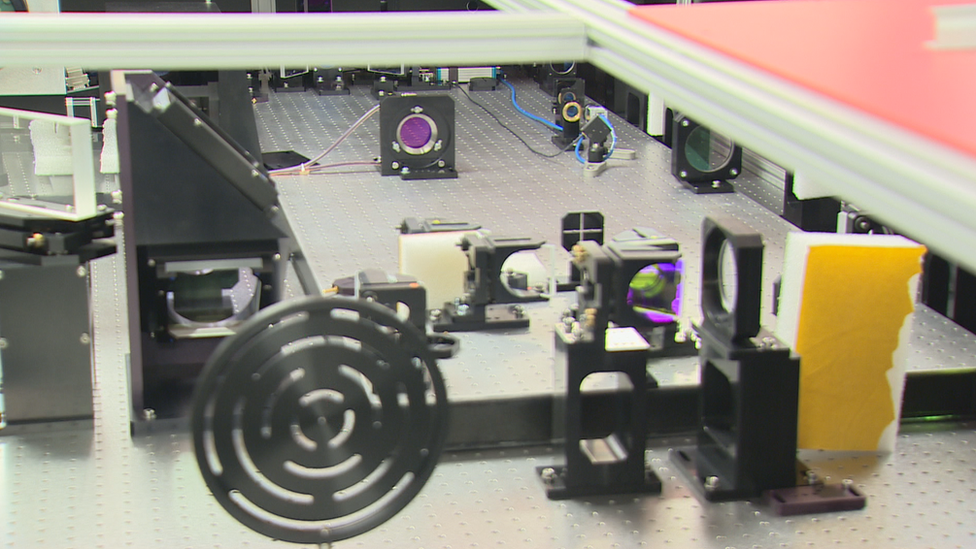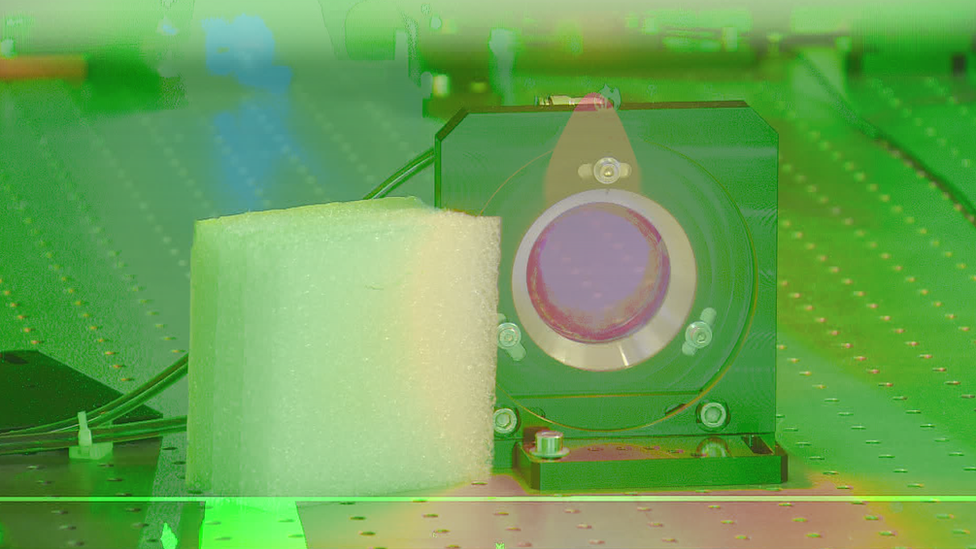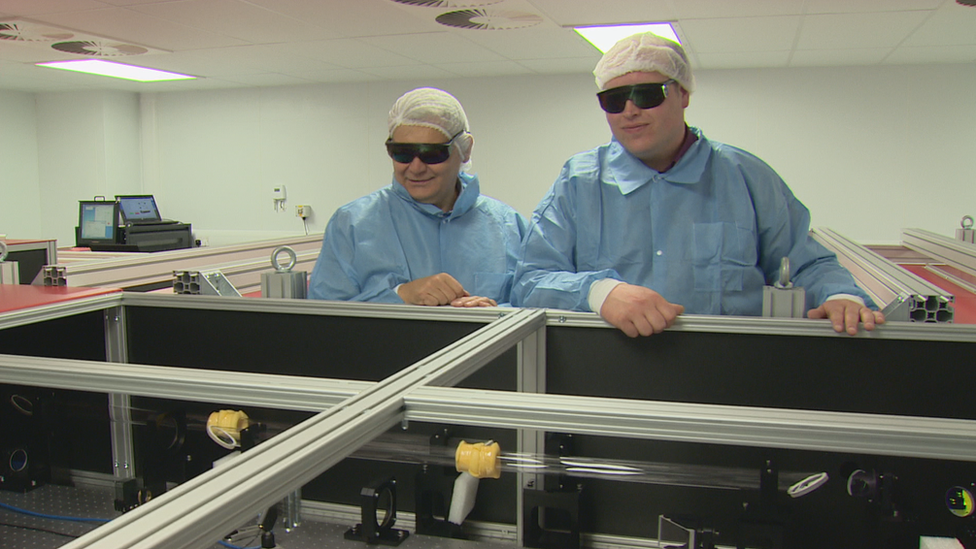Glasgow researchers create star power in the lab
- Published

The equipment can deliver very high power in short bursts
A team led by researchers at Strathclyde University in Glasgow have replicated the effects of space radiation in the laboratory.
They've used new laser-plasma-based accelerators to mimic the radiation.
It was first achieved using the Central Laser facility, part of the STFC Rutherford Appleton Laboratory near Oxford.
Now Strathclyde will be taking the work further because they've installed one of the world's most powerful lasers.

Space looks peaceful but it's a hostile place.
Radiation levels in orbit are 10 times what they are here on Earth.
For astronauts and probes leaving orbit - and the protection of the planet's magnetic field - they're 10 times worse again.
That's why the European Space Agency (ESA) is funding the research, which also involves universities in Germany and the United States.
When you're assessing the effects of broadband radiation on humans and electronics, the first priority is safety - and so, just a few hundred yards from George Square in Glasgow city centre, a 10-tonne door floats on air.
It's guarding the entrance to a concrete bunker.
Prof Bernhard Hidding, who is chairman of Experimental Physics at Strathclyde University, said: "The flux of energetic particles such as electrons is very intense.
"This is a big danger for electronics on board space vessels and satellites, but also for astronauts.
"Sometimes Nasa and the ESA call these electrons in these so-called radiation belts - the Van Allen Belts - 'killer' electrons."

That radiation is being reproduced by the Scottish Centre for the Application of Plasma-based Accelerators (Scapa) which is based at Strathclyde.
It's taking advantage of a recent and huge leap in technology.
Beams of high-energy particles used to be created in linear accelerators 100 metres (328ft) long. Now you can fit one in your pocket.
But to do that you need enormous amounts of power.
Which is why Scapa has just installed £3.5m worth of French-built laser on the floor above.
Scapa's laser manager Dr Gregor Welsh has the technical specs off by heart.
"This is the highest average power laser system in the world today," he says.
"It's unique in a university environment. It delivers 350 terawatts at five hertz."
That's 350 trillion watts, five times a second.

"That's the peak power," he says. "For the average power we deliver up to 14 joules which we compress down to 25 femtoseconds."
"So high energy and very short pulses give us extremely high peak power."
A femtosecond is one millionth of one billionth of a second. But if grasping that is a bit too much, Scapa's director, Prof Dino Jaroszynski, can put it into perspective.
"If you think about all the power from the sun reaching the UK, this laser actually produces the same amount of power. But only for a very, very short time," he says.
They're producing these massive bursts of light to investigate more than space radiation.
Scapa's centre manager Dr Mark Wiggins says the laser will produce high-energy particles and radiation pulses for experiments in science, engineering and medicine.
Radiation pulses
He points to one particularly promising research area.
"Radiotherapy is an ongoing and particularly interesting project because we're looking at electron beams as a potential radiation therapy technique as opposed to X-Rays or proton beams.
"There are a lot of nuclear physics applications because these are very novel sources of, say, gamma rays.
"They're very bright radiation pulses and very, very short."
Among the other potential applications: experiments in nuclear fusion.
The laser pulses could contain and compress the fuel for a fusion reaction, producing energy in the same way the sun does.
Because this laser - however briefly - can reproduce the temperatures and pressures found inside stars.